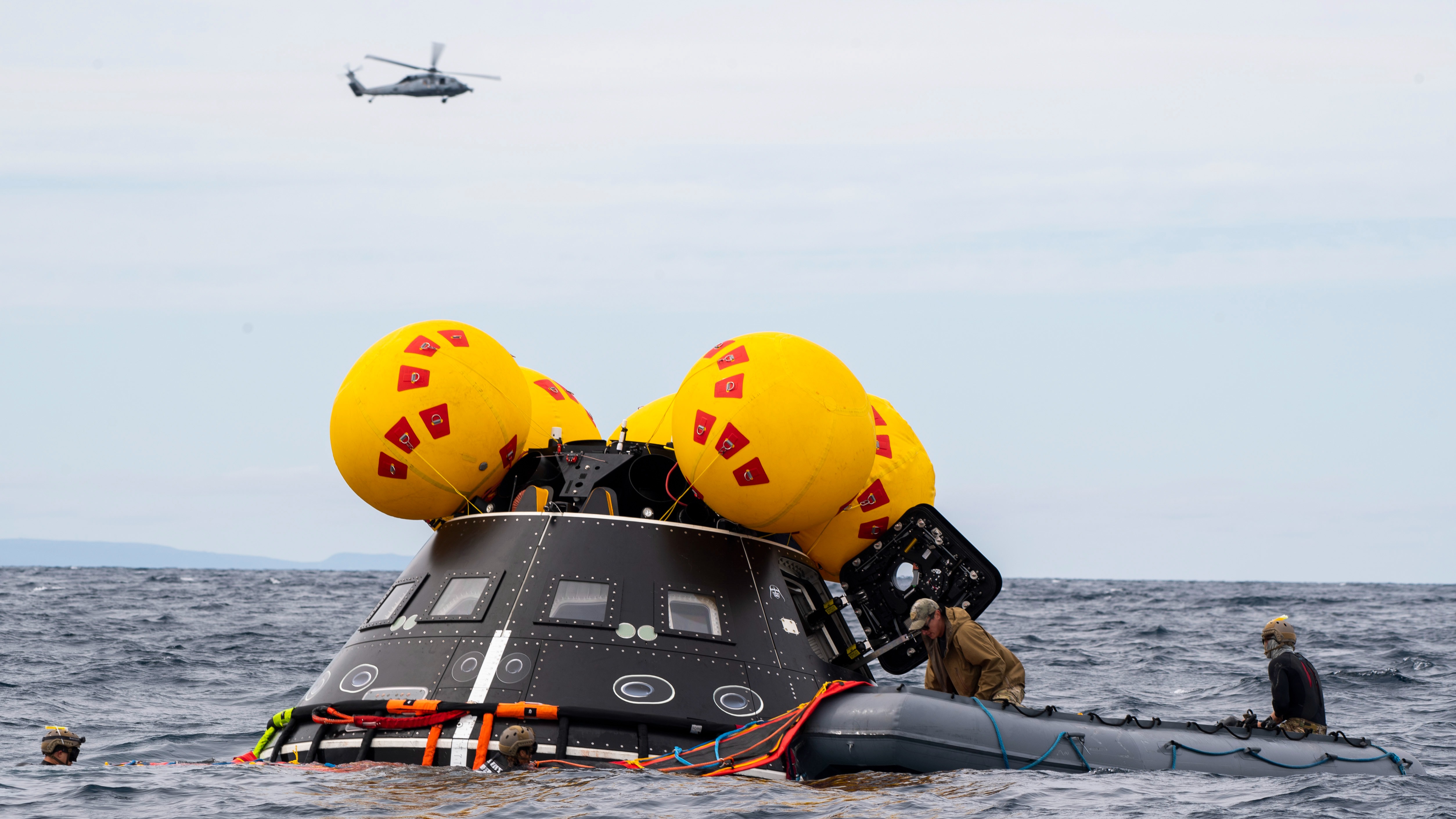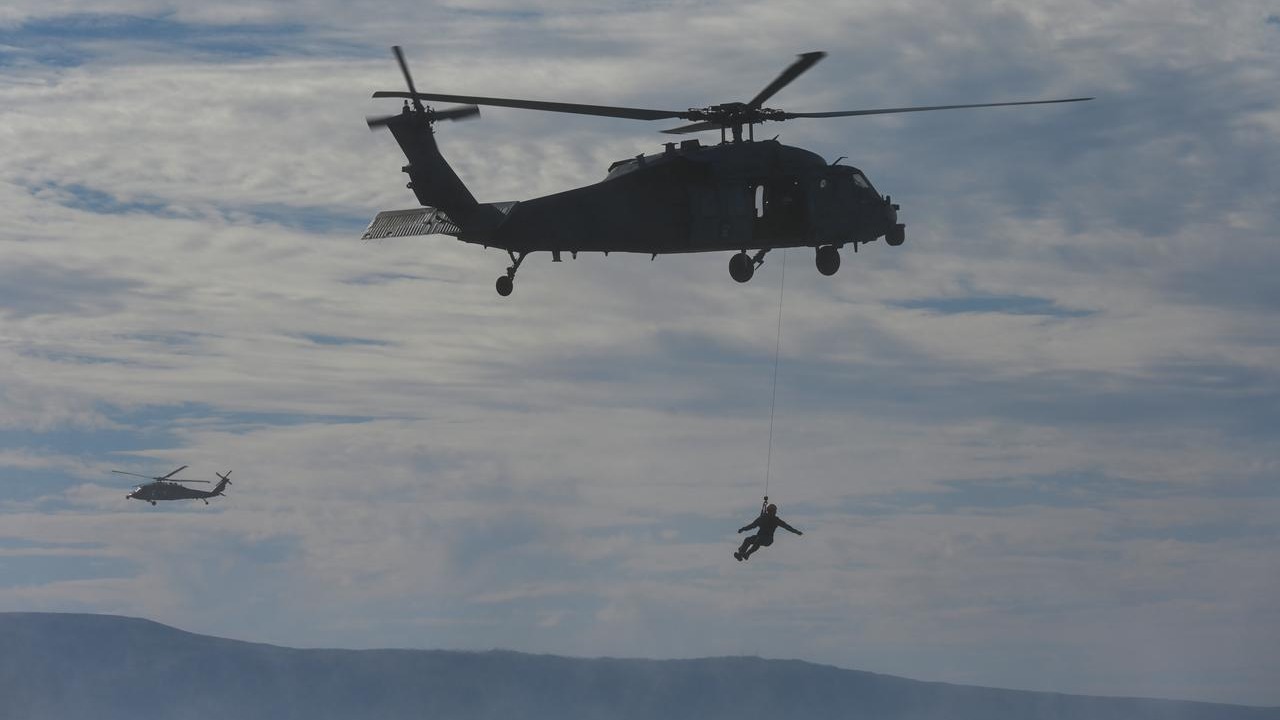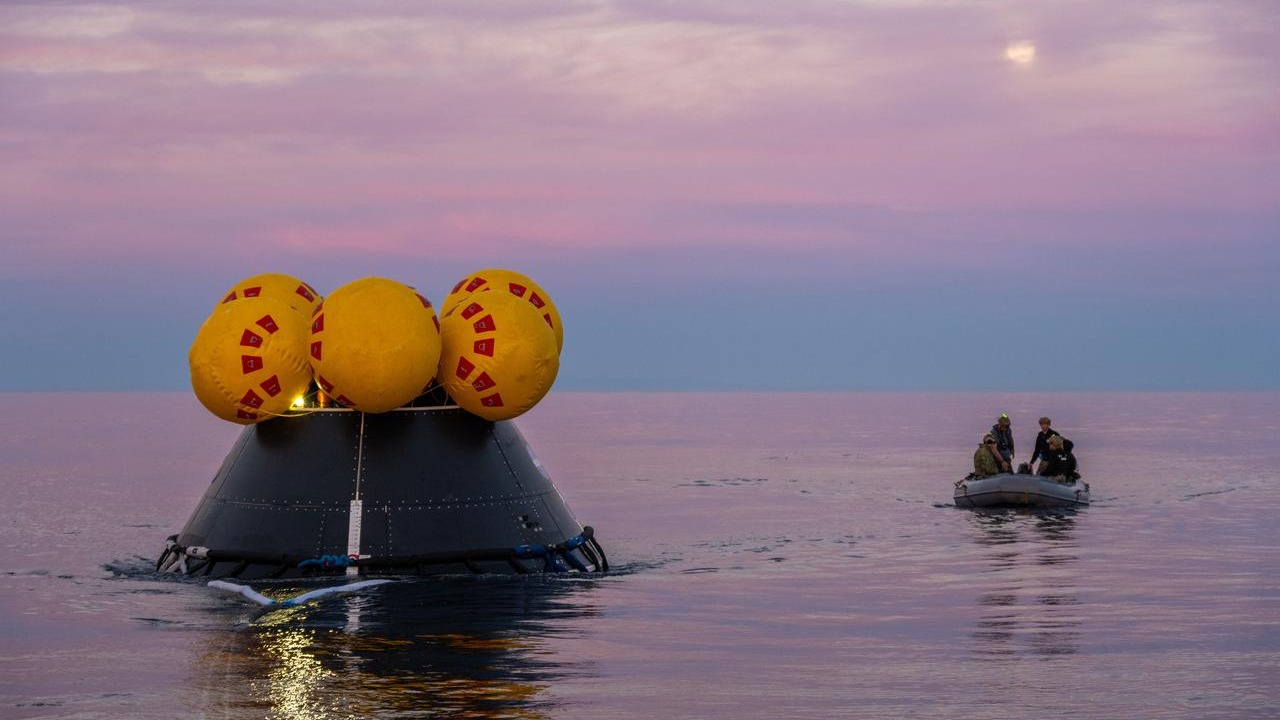Get to the choppa! Artemis 2 moon astronauts practice splashdown with U.S. Navy (images, video)
The simulation is "letting that team work through all of the issues that they may encounter" during recovery.
Just off the coast of San Diego, Artemis 2 astronauts, NASA personnel and the U.S. Navy practiced splashdown operations this month for the eventual end of the agency's forthcoming crewed moon mission, slated to lift off in September 2025.
In a callback to the Apollo moon missions of the 1960s and 1970s, the multi-day Underway Recovery Test 11 saw helicopters, rescue divers, a huge military ship and hundreds of people unite to practice getting the astronauts safely out of the water.
It's the first time the four astronauts of Artemis 2 put themselves at sea to learn how to safely exit their Orion spacecraft in choppy ocean waters, though all teams have gone through different types of recovery exercises before URT-11.
Related: Astronauts won't walk on the moon until 2026 after NASA delays next 2 Artemis missions
Artemis 2 aims to send four astronauts around the moon on the first crewed lunar expedition since Apollo 17's landing in 1972.
The crew includes NASA commander Reid Wiseman, NASA pilot Victor Glover (who will become the first Black person to leave low Earth orbit, or LEO), NASA mission specialist Christina Koch (who will become the first woman to go beyond LEO) and Canadian Space Agency (CSA) mission specialist Jeremy Hansen (who will become the first non-American to fly to the Moon).
The quartet practiced their recovery moves in the Pacific Ocean along with at least two other members of the astronaut corps: CSA astronaut Jenni Gibbons, who is Hansen's backup, and NASA astronaut candidate Chris Birch, according to NASA. (None of the group posted yet on social media about their sea activities.)
Breaking space news, the latest updates on rocket launches, skywatching events and more!
"We'll be out on a ship with the U.S. Navy, practicing in the Orion capsule as if the crew has just come back from around the moon," Gibbons told Space.com on Feb. 5 in an exclusive interview at CSA headquarters near Montreal, during an event highlighting Canadian contributions to Artemis 2.
"We work with the amazing recovery team, working on egress from the capsule with assistance ... and really letting that team work through all of the issues that they may encounter and how to do that as seamlessly as possible."
Related: Artemis 2 moon mission practice recovered crew from an Orion spacecraft at sea
While the actual Orion that will fly to the moon is not used at sea, practice took place with a mockup known as the Crew Module Test Article. The mockup "is the same size as Orion and has seats inside so the team can simulate astronauts being aboard," NASA officials wrote in a 2023 release.
The multi-day recovery effort this month was supported both by NASA's Exploration Ground System's landing and recovery team and the Department of Defense, including the USS San Diego amphibious transport dock ship and the U.S. Navy's Helicopter Sea Combat Squadron (HSC) 23, also known as the "Wildcards."
The Wildcards use MH-60S helicopters and MQ-8B Fire Scout uncrewed aerial vehicles to work "in support of Navy objectives," the squadron's web page states, including applications like personnel recovery or special operations forces — both of which are relevant for Artemis 2 operations at sea.
Also in the group were divers from the Explosive Ordnance Disposal Mobile Unit, who are trained to "parachute from the air to reach distant targets or dive under the sea to disarm weapons," the Navy website states.
NASA's Exploration Ground Systems (EGS) "develops and operates the systems and facilities needed to process and launch rockets and spacecraft for NASA's Artemis missions," the agency's website states.
EGS, among other duties for Artemis 2, supported a simulated launch exercise conducted by the Artemis 2 astronauts in 2023. It saw the four astronauts go out to their launch pad at NASA's Kennedy Space Center in Florida and ascend the mobile launch tower that will one day bring them on board the Space Launch System rocket.
Artemis 2 and Artemis 3 are the next two missions in line under the NASA-led Artemis program. Both of these missions were delayed in January due to numerous technical issues; Artemis 2 was pushed back nine months to September 2025 while Artemis 3 was delayed at least a year to 2026.
Canada is a participant in Artemis 2 as one of more than 30 countries who have signed up under the U.S.-led Artemis Accords. A subset of those countries contribute hardware for direct participation in moon missions — the Canadarm3 robotic arm (for NASA's future Gateway space station around the moon) is CSA's contribution, for instance, in exchange for Artemis seats in the future. Other Artemis-focused hardware is being provided by groups like the European Space Agency, the United Arab Emirates Space Agency and the Japan Aerospace Exploration Agency.
Most of the nations are part of the accords under its secondary objective, however, which is to establish peaceful space exploration norms.

Elizabeth Howell (she/her), Ph.D., was a staff writer in the spaceflight channel between 2022 and 2024 specializing in Canadian space news. She was contributing writer for Space.com for 10 years from 2012 to 2024. Elizabeth's reporting includes multiple exclusives with the White House, leading world coverage about a lost-and-found space tomato on the International Space Station, witnessing five human spaceflight launches on two continents, flying parabolic, working inside a spacesuit, and participating in a simulated Mars mission. Her latest book, "Why Am I Taller?" (ECW Press, 2022) is co-written with astronaut Dave Williams.














